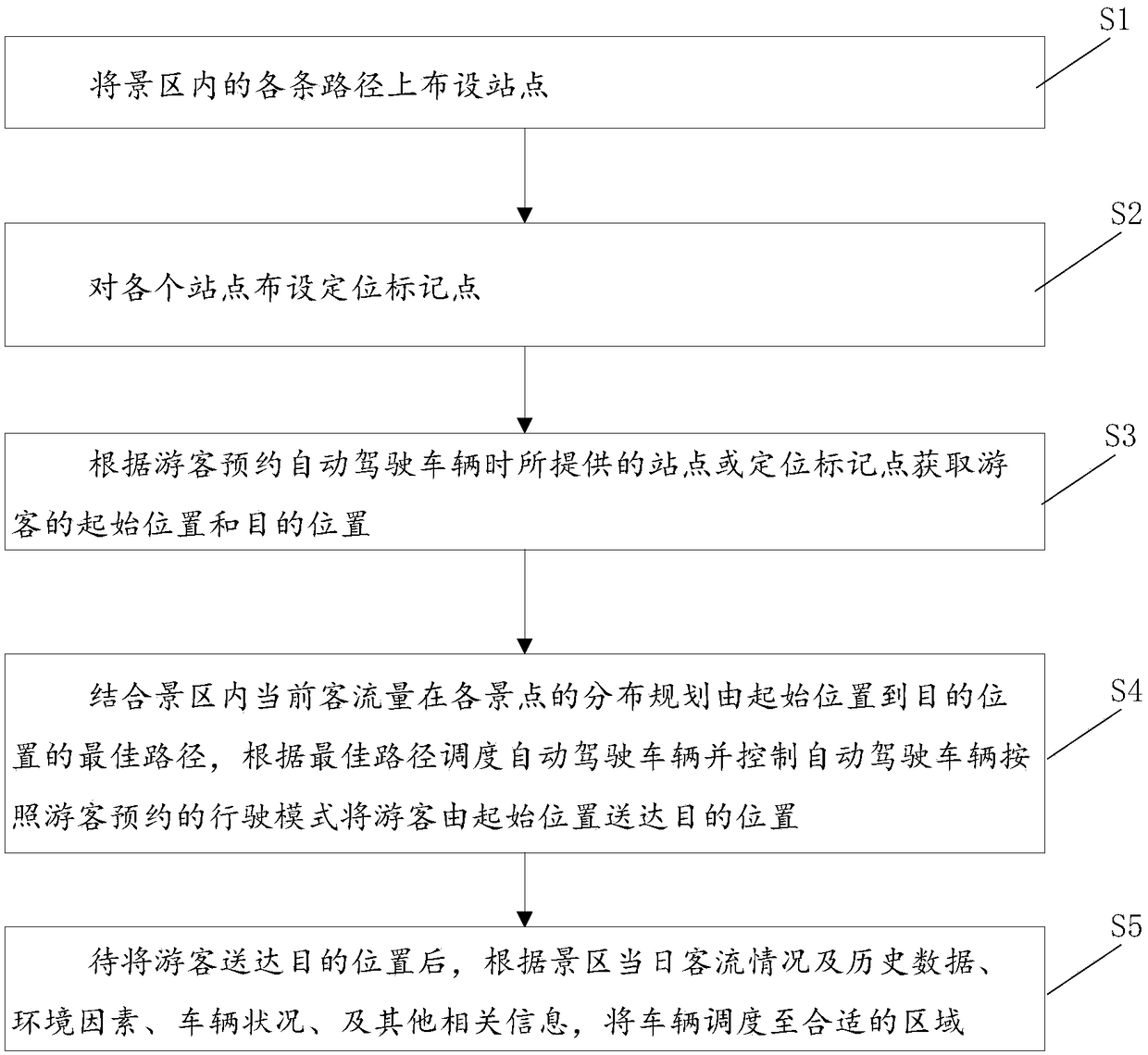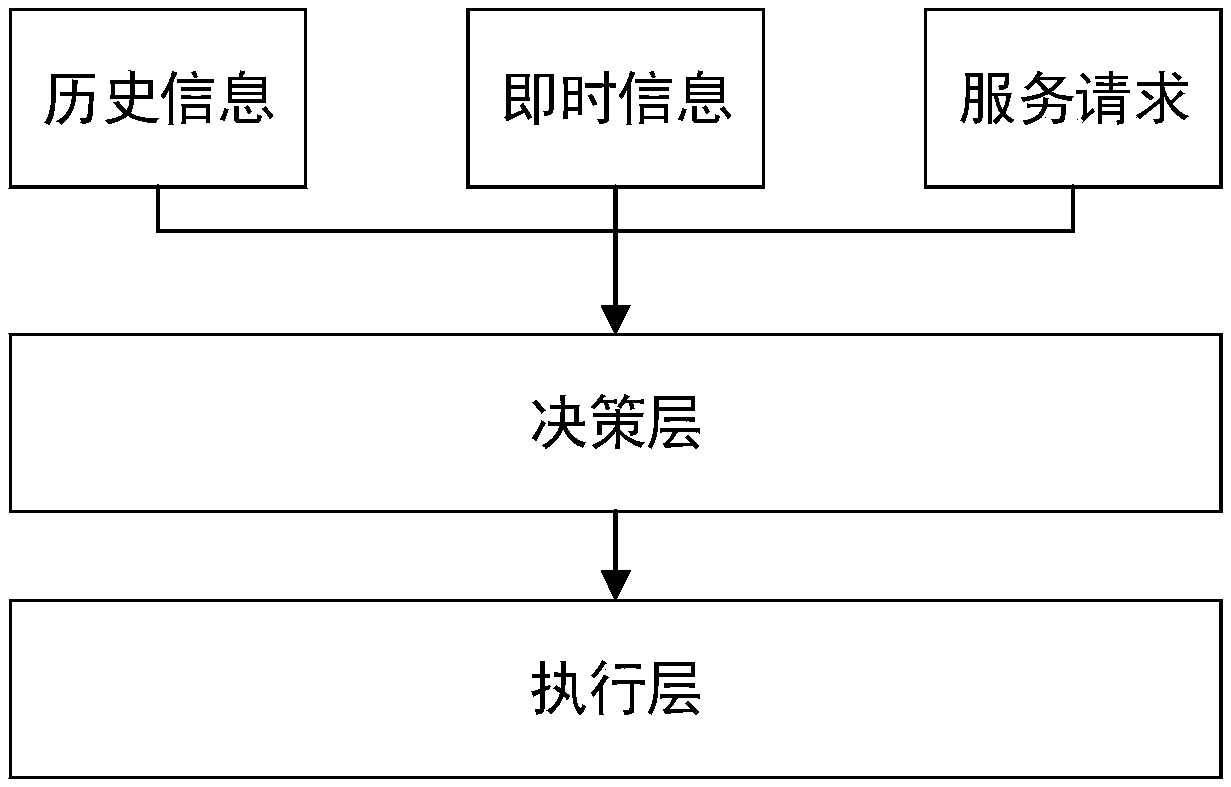A scenic spot operation method and system using an autonomous vehicle
A technology of autonomous driving and vehicles, applied in the field of scenic tourism, can solve the problems of inconvenience for tourists to travel by car, and achieve the effect of saving scenic space and labor cost.
- Summary
- Abstract
- Description
- Claims
- Application Information
AI Technical Summary
Problems solved by technology
Method used
Image
Examples
Embodiment 1
[0044] This example provides a scenic spot operation method using self-driving vehicles, the flow chart of which is as follows figure 1 As shown, it specifically includes the following steps.
[0045] S1: Set up stations on each path in the scenic area.
[0046] The site in this example may specifically be a site number or a site name, as long as the site can be uniquely identified.
[0047] S2: Layout marking points for each station.
[0048] The positioning mark points reflect the spatial position on the map of the scenic spot where the corresponding site is located. There is a one-to-one mapping relationship between the positioning mark point and the corresponding site. The mapping relationship means that the corresponding positioning mark point can be found according to the site. Since the positioning marker points reflect the spatial position on the map of the scenic spot where the corresponding site is located, the spatial position on the scenic spot map where the site...
Embodiment 2
[0076] Based on Embodiment 1, this example provides an implementation of positioning marker points. The positioning marker points in this example are ground numbers or codes that are coded or numbered by area on the ground of the scenic spot. The ground number or code reflects the location of the corresponding site on the map of the scenic spot. When a visitor calls the self-driving vehicle through the client system and directly inputs the site, the background server can obtain the ground number or code corresponding to the site, and can identify the spatial position of the site where the visitor is located.
[0077] In other embodiments, when tourists call the self-driving vehicle through the client system, they can also directly input the ground number or code, so as to obtain the spatial position of the site where the tourists are located.
Embodiment 3
[0079] Based on the second embodiment, this example provides another way to realize the positioning mark point. The positioning mark point in this example is an object with identification features marked on the map of the scenic spot, that is, this example uses visual positioning, based on this example If it is inconvenient to enter the starting site when tourists use the client system to reserve a self-driving vehicle, tourists can use the camera of the smartphone to take at least one photo or a video of the object and upload it to the background server. Based on the intelligent identification of the image or video, the server can then compare it with the database information to complete the positioning of the visitor's starting site.
PUM
 Login to View More
Login to View More Abstract
Description
Claims
Application Information
 Login to View More
Login to View More - R&D
- Intellectual Property
- Life Sciences
- Materials
- Tech Scout
- Unparalleled Data Quality
- Higher Quality Content
- 60% Fewer Hallucinations
Browse by: Latest US Patents, China's latest patents, Technical Efficacy Thesaurus, Application Domain, Technology Topic, Popular Technical Reports.
© 2025 PatSnap. All rights reserved.Legal|Privacy policy|Modern Slavery Act Transparency Statement|Sitemap|About US| Contact US: help@patsnap.com


